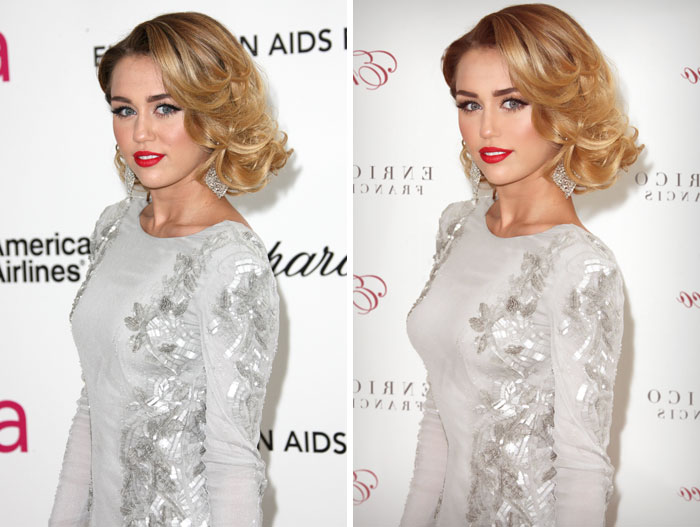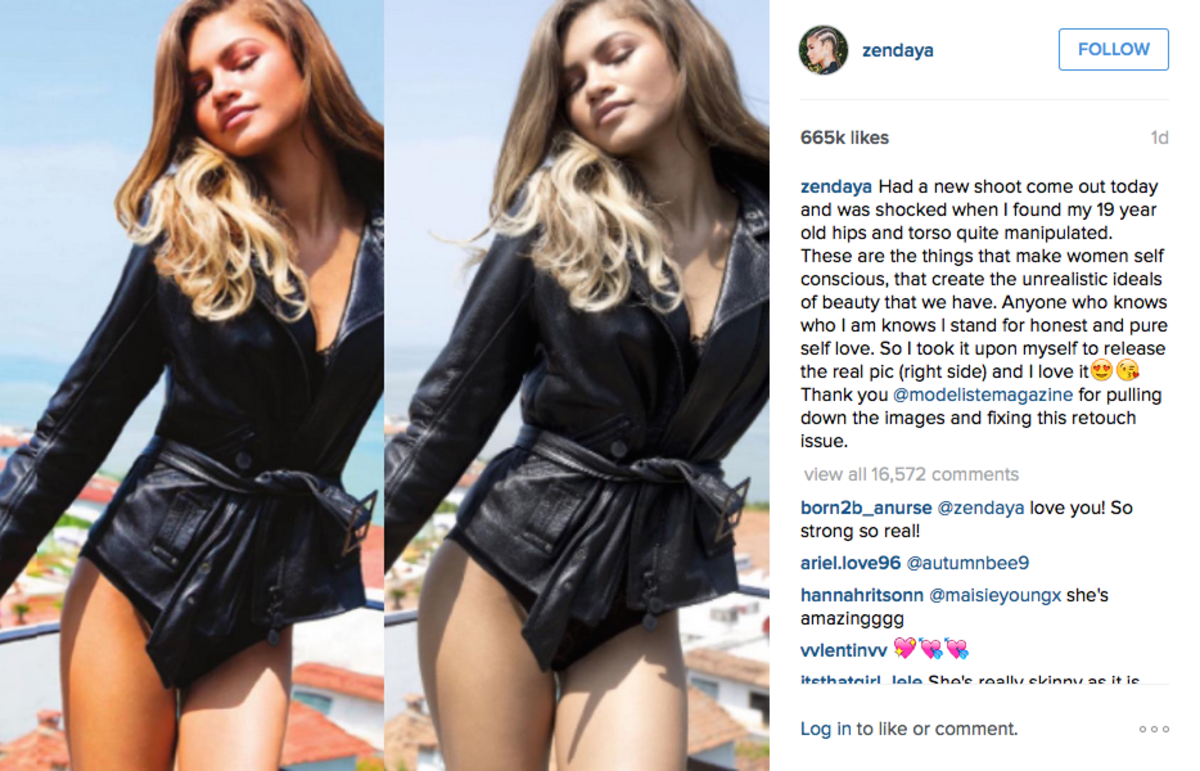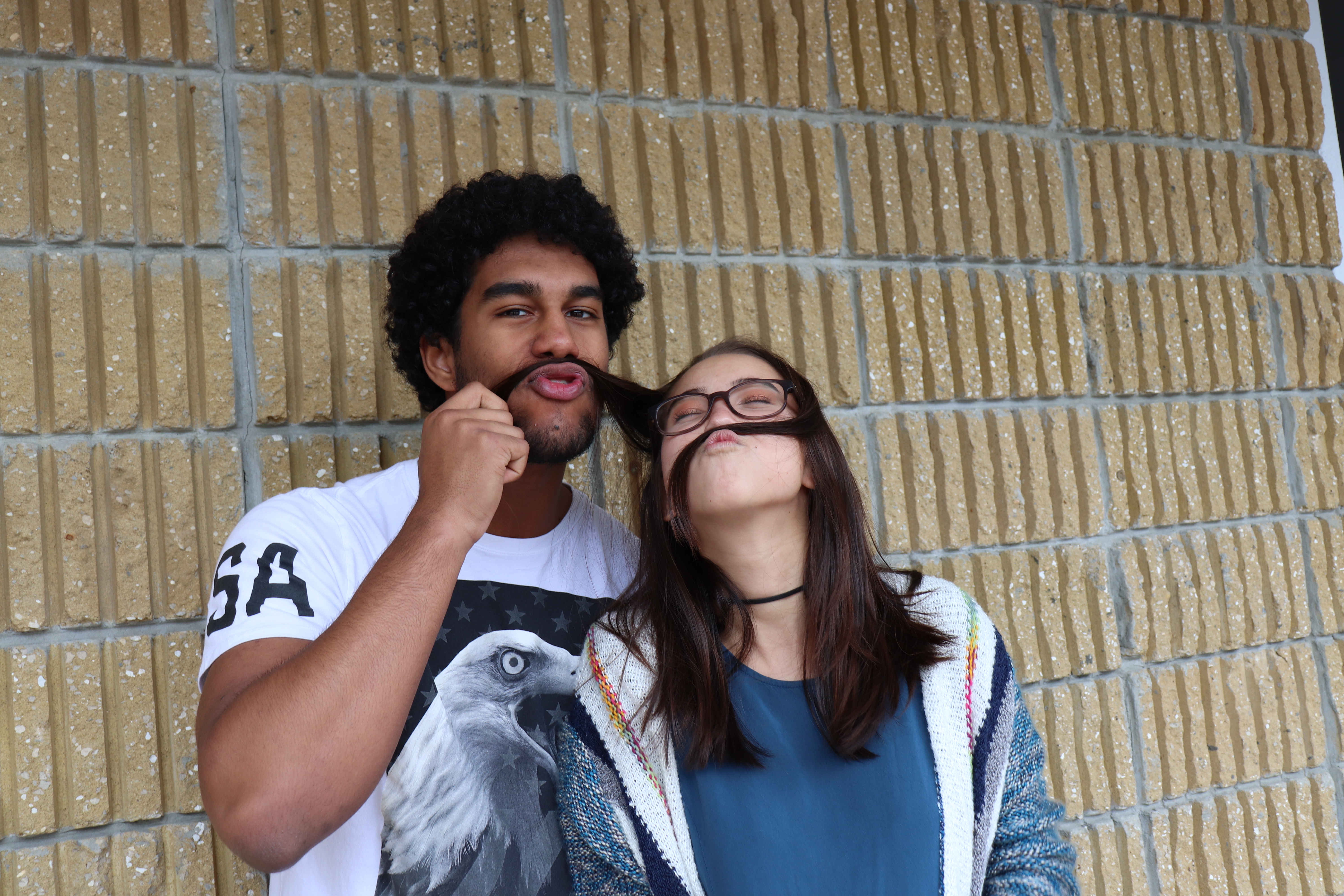
The Ugly Side of Beauty
By Bre Jarvis (Web Editor)
If you’re like the average human being, you’ve probably found yourself at one time or another in the checkout aisle of a grocery store, flipping through an issue of Vogue, Cosmopolitan, or the like. And if you’re like 75% of teenage girls, you probably ended up feeling “depressed, guilty, and shameful” about your body after finishing. While we often hear that beauty is in the eye of the beholder, it’s not hard to tell that magazines tends to portray women as scantily clad, free of blemish, and thin—very, very thin.

What most don’t know, however, is that there’s a lot that goes on between the time a model is photographed and when their picture is plastered on the cover of a magazine. Utilizing modern technology such as Photoshop, professional photo editors transform real women into the idealized models that appear in the media through a process known as retouching. Virtually every photo that is published to a magazine or website undergoes retouching, and treatments vary from smoothing skin to slimming waists to changing body structure. While the fashion and beauty industries argue that some editing is necessary to improve the overall quality of photos, retouching is often taken too far.
“Retouching is becoming more extreme,” says Henry Farid, a computer specialist from Hampshire. “They are no longer making perfect skin, they are making impossible human beings.” No real woman naturally looks like the women of the media—and yet, a recent survey revealed that 15% of 18- to 24-year-olds are convinced that the media’s portrayal of women is real. It comes as no surprise, then, that a consequence of retouching is decreased body image, particularly among young girls and women.
Everyday women are bombarded by photos of celebrities that have been masterfully edited to possess ideal bodies. Even if they know that images displayed in the media have been altered, women are still affected by the standards of beauty they set. According to Jean Kilbourne, the edited photos displayed in the media “sell concepts of love, sexuality, of success, and perhaps most important, of normalcy. To a great extent, they tell us who we are and who we should be.” The fashion and beauty industries have ingrained into the minds of women everywhere that the type of body found on the covers of magazines—that is, a body with a thin waist, generous curves, and the notorious thigh gap—is the kind of body a woman needs to be accepted as beautiful and worthwhile. But since so few women actually possess a body shape that matches that of retouched models, many young girls are left disappointed with the way they look.

In fact, at age thirteen, 53% of girls dislike their bodies, a percentage that increases to 78% by age seventeen. It’s no shock that as a consequence, women turn to unhealthy habits such as purging, starving, and excessive exercise in order to obtain the perfect bodies they see in the media. Perhaps the impossible standards set by retouched photos accounts for the striking number of women diagnosed with eating disorders—almost 10 million in the United States alone. More commonly, girls devote themselves to fad diets and exercise programs, obsessively monitoring their weight and calorie intake in the hopes of looking like their favorite celebrities.
Retouching has contributed to a society that encourages girls to focus their lives on becoming the “perfect” woman—a woman that’s really no more than the end result of dodging and burning, cutting and pasting, airbrushing and toning. In real life, no woman fits the mold of perfectly thin or lusciously curvy. We have touching thighs, chubby cheeks, and belly pouches (and there’s nothing wrong with that). Those same “flaws” that society convinces women to get rid of aren’t flaws at all—just natural characteristics that make each of us unique. After all, wouldn’t the world be a boring place we all looked the same?

Photoshopping women isn’t the only way or even the best way for advertisements to sell products. Many successful companies, including Aerie, Modcloth, and Teen Magazine, have recently ditched retouching in favor of advertising that celebrates natural beauty and diversity. Some countries have even passed legislation limiting the extent to which advertisers can digitally alter the appearance of models, while others have required labels for retouched photos.
Let’s create a society that celebrates the thin and the chunky, the slender and the curvy, the delicate and the athletic. Let’s create a society that knows a woman’s worth extends beyond her appearance, a society that values character over calories, bravery over beauty, and wisdom over weight. Let’s create a society that doesn’t need to crop out half a woman’s body for her to be considered acceptable. Let’s create a society where retouching doesn’t exist.

